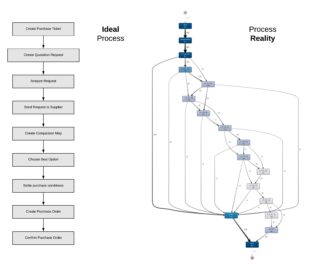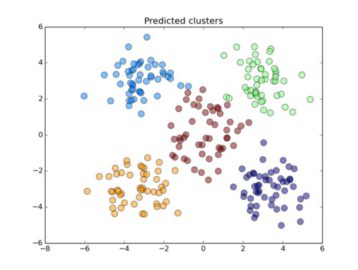How to build a rock-solid business case for ServiceNow to cut IT costs

COVID-19 has given digital transformation a real upswing. With that, the importance of IT and IT Service Management (ITSM) has grown. As ITSM market leader, it is to no surprise that many consider ServiceNow. A powerful ITSM capability will improve IT service stability and ensure any issues (incidents) are resolved asap. It even helps employees to focus on delivering great Customer Experiences. But even though the case for ServiceNow is clear, the corona crisis has made funds scarce. This means you’ll need a rock-solid business case for ServiceNow with clear goals and a practical approach to get budget approval.
The traditional approach—timing ITSM activities onsite, measuring effort and throughput times and performing a detailed and expensive study—is not how we do it. We offer a simple yet powerful data-driven business case development approach that uses Artificial Intelligence and your existing ITSM data to build your case for change, regardless of the system you currently have in place. Backed by data, we identify relevant use cases and potential cost savings. We even include a roadmap on how to achieve these benefits.
But there’s more. We build a successful solution that leverages Virtual Agent and Machine Learning, determine which use cases to automate with IntegrationHub and set up resolution groups, process flows and categorization, etc. In other words: we deliver a rock-solid, irrefutable and quantitative benefits case, including a solution design and realization roadmap/plan. You can use the case for short-term decision making and managing project scope to ensure you add real value. Alternatively, you can use it for measuring after go-live, enabling you to steer on benefit realization.

Service Desk Data Diagnosis (SDD)
New data science technology offered by AWS and Microsoft Azure provides the basis for our data-driven solution called Service Desk Data Diagnosis (SDD). SDD provides a comprehensive overview of the current state of Service Management data in your application landscape. With the insights gained by the SDD, you can identify potential cost savings and quality of life improvements. Furthermore, you can investigate use cases for ServiceNow’s productivity tools like Virtual Agent and provide triage and self-service via the chatbot feature. It even unlocks possibilities for Predictive Intelligence, so you can start automation via Machine Learning. To top it off, SDD improves project planning accuracy and scoping based on available resources.
How does SDD work?
SDD leverages data from Incidents, Problems, Changes and Request fulfilments, in line with ServiceNow best practices. It consists of three main deliverables: a Process Map, Health Dashboard and Clustering Analysis. This trinity will give an indisputable and complete overview of opportunities and challenges within your landscape:
- Process Map
We create a Process Map via Process Mining, which leaves us with a complete model of all database activities and processes using audit trail analysis. This model uncovers the reason behind differences in expected behaviour versus actual behaviour in the system. It also differentiates user errors and so-called ‘elephant paths’, where a user has found a more efficient way through a process outside of defined workflows. Figure 1 contains an example of a Process Map.

Figure 1. Example Process Map
- Health Dashboard
A Health Dashboard is an overview of the overall state of KPIs typically measured for ITSM processes. It provides the current state of affairs, as well as possible basic improvements and candidates for further scrutiny. Spot ticket bottlenecks based on ticket lead time, check the average number of reassignment tickets or how many departments a ticket passes before fulfillment.
- Cluster Analysis
In Cluster Analysis, Machine Learning provides insights into hidden patterns and inconsistencies in data. Using incident comparison, clustering helps identify robust categories and assignment groups for a set of incident records. It also measures ticket assignment efficiency and identifies possible improvements. Apart from diagnosis, a Clustering Analysis helps generate changes to the environment to proactively prevent incident recurrence. In figure 2, an example clustering result is shown. The analysis groups incidents to the full extent of their content and uncovers similarities that would otherwise have stayed hidden.

Figure 2. Example Clustering Analysis
Recipe for a smooth ServiceNow implementation
The SDD supports the implementation process by quickly reducing lead times and increasing efficiency prior to a platform change. This saves costs and enhances implementation quality and service desk adoption. What’s more, you can easily spot opportunities for efficiency improvements at a later stage and get a heads-up on future implementation challenges. But don’t forget that an SDD is just the beginning! Use the insights to monitor the desired scope and adjust if necessary or use it for evaluation after go-live.
Once ServiceNow is implemented, make sure the platform stays in tip-top condition with our ServiceNow Managed Services. This means we maximize platform ROI/value and take care of continuous improvement. But, what’s best about this is that you don’t have to worry about a thing!
Recognize this problem?
If you are in the middle of building a business case for ServiceNow and are ready to unlock the hidden potential of your data, then do reach out to us!
Join 1400+ ServiceNow professionals
Sign up to our monthly Flow@Work Exclusive newsletter to get free access to our expertise and lots of tips and tricks to make work flow on the Now® Platform.




 Mitchell van Winsum
Mitchell van Winsum